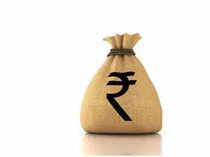
Analysts pegged the scope for fresh measures at Rs 10.71 lakh crore as the total figure takes into account the measures that the government and RBI have already announced. Around Rs 1.7 lakh crore is what the government announced in stimulus for the poor earlier. The steps RBI took add up to Rs 6.5 lakh crore, they said.
Given the recent changes in labour laws in states such as Uttar Pradesh, Gujarat and Madhya Pradesh and the recent government indications to push for supply chains moving into the country from China, the stimulus is seen as a major lift to manufacturing in India.
"We believe a considerable amount of money could be directed towards bank guarantees to the MSME sector, refinance facilities and long-term tax breaks for industries to boost manufacturing. Any allocation towards a credit guarantee fund will add to the government's contingent liabilities, but not worsen India's fiscal deficit calculations,” UBS said.
Earlier, in Union Budget 2020, the government had announced removal of the DDT (Rs 0.5 lakh crore) and offers personal income-tax cuts (Rs 40,000 crore). In September 2019, the government had announced corporate tax cuts worth Rs 1.45 lakh crore.
Edelweiss Securities said the stimulus can potentially be divided into four forms: loan waivers for MSMEs and increased spending; tax cuts including tweaking of GST and personal income-tax rates; credit guarantees to incentivise lending to MSMEs; and the possibility of setting up a special purpose vehicle (SPV) with government equity and RBI levers to lend directly. If implemented, this would be similar to what the US Fed is doing these days, it said.
"While the first two measures (income transfers and tax cuts) will entail fiscal cost, the latter two (credit guarantees and direct lending) will have little fiscal implications," Edelweiss said.
Rahul Bajoria, Chief India Economist at Barclays, said the Prime Minister indicated several times that India needs to be 'self-reliant', invoking a material increase in Covid-19 related production for health and protection equipment as a measure of domestic manufacturing.
"This is a trend, which has persisted for last few quarters, and has led to major custom duty hikes in recent years. We believe more measures to invert duty structures to protect and promote domestic manufacturing might be on the anvil, but we await more clarity,” Bajoria said.
In a tweet on Tuesday, Sitharaman said: "We’ll build capacities, skill people and compete globally acquiring strengths. We’ll build the local. After all, every global brand began with their local strength. We shall integrate with GVCs."
GVCs stand for global value chains, which refers to international production sharing.
In another tweet, the FM said a human-centred globalisation is being discussed. "Vasudaiva Kutumbakam is the spirit. In our culture, we treat the earth as the mother. So when we speak of self-reliance, we talk of well being of all,” she said, adding that the ongoing pandemic has provided an opportunity to make the 21st Century an Indian century.
Arindam Guha, Partner for Lead (Government and Public Services) at Deloitte India, said the package is likely to prioritise sectors where there is a large domestic market and which can generate significant employment.
It expects significant reforms impacting all stages of the value chain of sectors from farm to consumers with the end objective of increasing ease of doing business. “The package is likely to leverage financial instruments like credit guarantees so that the country’s fiscal situation is also factored in,” Guha said.
Jefferies said the incremental package would be 5 per cent of GDP. “A part of the same could be restatement of existing schemes,” it said. It noted that the first fiscal package the government announced recently had allocated only 60 per cent, or Rs 90,000 crore, to new spending, while the rest was re-allocation.
Read More News on
Download The Economic Times News App to get Daily Market Updates & Live Business News.
Subscribe to The Economic Times Prime and read the Economic Times ePaper Online.and Sensex Today.
Top Trending Stocks: SBI Share Price, Axis Bank Share Price, HDFC Bank Share Price, Infosys Share Price, Wipro Share Price, NTPC Share Price
Read More News on
Download The Economic Times News App to get Daily Market Updates & Live Business News.
Subscribe to The Economic Times Prime and read the Economic Times ePaper Online.and Sensex Today.
Top Trending Stocks: SBI Share Price, Axis Bank Share Price, HDFC Bank Share Price, Infosys Share Price, Wipro Share Price, NTPC Share Price















 Get Unlimited Access to The Economic Times
Get Unlimited Access to The Economic Times
